The distinct cognitive processes between children and adults have long intrigued researchers, sparking inquiries into the intricate workings of the developing brain. Factors such as neural plasticity, synaptic pruning, and myelination play pivotal roles in shaping the differing perceptions and reasoning abilities in these two age groups. As we delve deeper into the complexities of these cognitive variances, a clearer understanding emerges of how these differences not only influence learning strategies but also have implications for social interactions and emotional development.
Key Takeaways
- Children's decisions are emotion-driven, while adults make rational choices.
- Kids focus on immediate gratification, but adults consider long-term consequences.
- Children exhibit egocentricity, while adults possess a fully developed theory of mind.
- Variances in brain development impact cognitive processing, influencing decision-making.
Cognitive Development in Children Vs. Adults
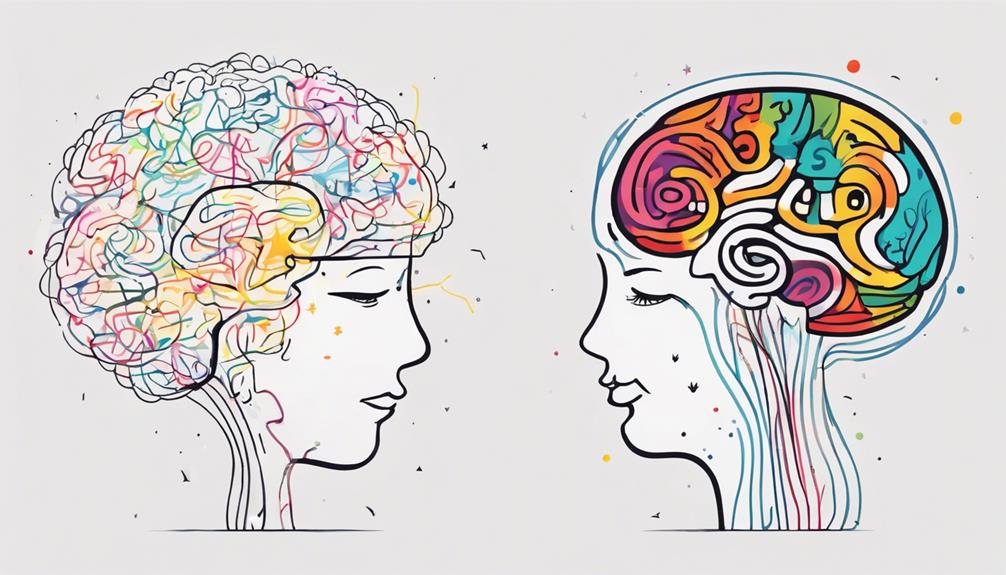
Children and adults exhibit distinct patterns of cognitive development, progressing through different stages that shape their thinking processes and problem-solving abilities. Children primarily rely on the sensorimotor and preoperational stages for cognitive development, marked by concrete thinking and limitations in mental operations. In contrast, adults operate within the concrete and formal operational stages, showcasing more advanced cognitive abilities such as abstract thinking and logical reasoning.
One key difference lies in how children exhibit egocentricity and struggle with considering multiple perspectives, while adults can engage in complex problem-solving by understanding various viewpoints. Additionally, adults possess a fully developed theory of mind, enabling them to comprehend others' thoughts and emotions more effectively than children. These cognitive developmental variances significantly impact how individuals perceive and interact with the world around them, influencing information processing and decision-making capabilities. Understanding these differences in cognitive development is crucial for comprehending the disparities in thinking processes between children and adults.
Decision-Making Variances
Developmental disparities in decision-making processes between individuals of varying age groups stem from distinct cognitive abilities and neurobiological factors. Children tend to make decisions impulsively, driven by emotions and immediate rewards, while adults are more likely to consider long-term consequences and rationality. This difference can be attributed to the ongoing development of the prefrontal cortex, which is responsible for impulse control and emotional regulation. Furthermore, adults have more advanced cognitive skills, such as problem-solving and abstract thinking, which play a crucial role in their decision-making processes. Children often rely on external guidance and rules to make choices, whereas adults have internalized moral values that guide their decisions autonomously.
| Developmental Differences in Decision-Making | ||
|---|---|---|
| Children | Adults | Factors |
| Emotion-driven decisions | Rational decisions | Prefrontal cortex development |
| Immediate gratification | Long-term consequences | Cognitive abilities |
| External guidance | Internalized values | Neurobiological changes |
Neurological Variances
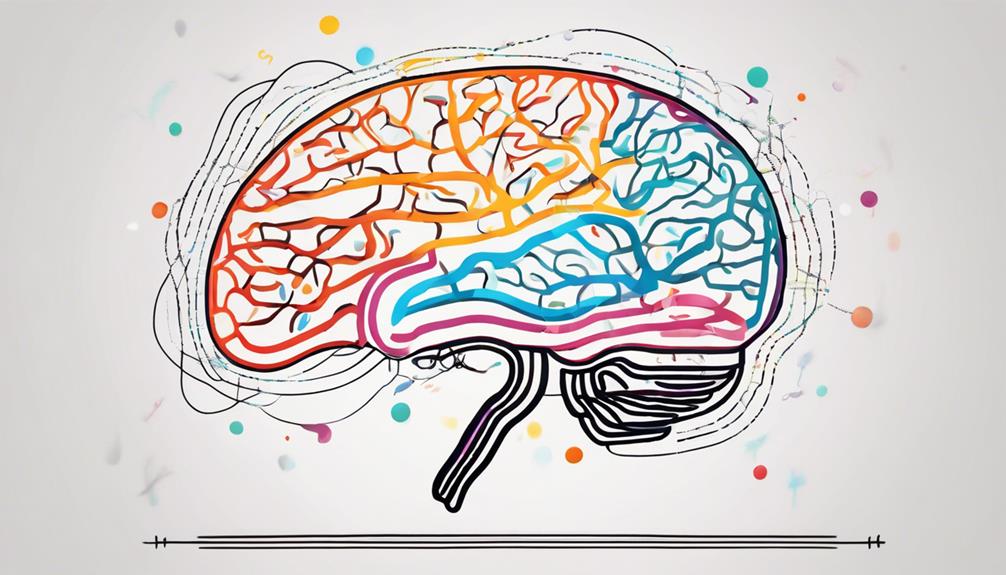
The differences in thinking between children and adults are intricately tied to neurological variances stemming from brain development. Children's brains are in a dynamic phase of forming connections, which influences their cognitive processing and perception of information. In contrast, adults possess more established neural pathways, enabling them to engage in complex reasoning and exhibit advanced cognitive functions.
Brain Development Variances
During early stages of brain maturation, significant variances in neural circuit development emerge, impacting how individuals process and integrate visual stimuli. A recent study highlighted these differences, showing that children prioritize sensory information separation, while adults possess more integrated neural circuits for processing visual cues. This disparity in brain development leads to contrasting perceptions of depth, perspective, and other visual stimuli between children and adults. Children's brains are still in the process of learning to combine and interpret various sensory inputs, which directly influences their cognitive abilities and decision-making skills. Understanding these neurological variances in brain development is crucial for comprehending the disparities in thinking between kids and adults, shedding light on how these differences influence behavior and learning processes.
Cognitive Processing Variances
In assessing cognitive processing variances between children and adults, distinct patterns of neural activation become evident. Neuroimaging studies have shown that children exhibit unique neural activation patterns compared to adults, particularly in developing regions of the prefrontal cortex responsible for decision-making and impulse control. Adults, on the other hand, demonstrate more efficient neural processing in areas associated with complex reasoning and problem-solving. These differences in neural activation suggest that children rely more on neural plasticity for rapid learning and adaptation to new information, while adults showcase a higher level of specialization and optimization in cognitive tasks. Variances in neurotransmitter levels, such as dopamine and serotonin, further contribute to the cognitive processing distinctions observed between children and adults.
Communication Style Variances
Neurological variances in communication styles between children and adults manifest distinct patterns in the expression of thoughts and emotions. Children often exhibit more emotional and spontaneous communication, while adults tend to employ logical and structured approaches. This difference is rooted in the developmental stage of the brain, where children may struggle with articulating complex ideas compared to adults. Moreover, adults typically possess a heightened awareness of social cues and context, influencing their communication style. The variances in brain maturation play a crucial role in shaping these distinct communication styles observed between kids and adults. Understanding these differences can aid in improving interactions and relationships between individuals of different age groups, fostering better communication and comprehension.
Impacts of Experience and Learning
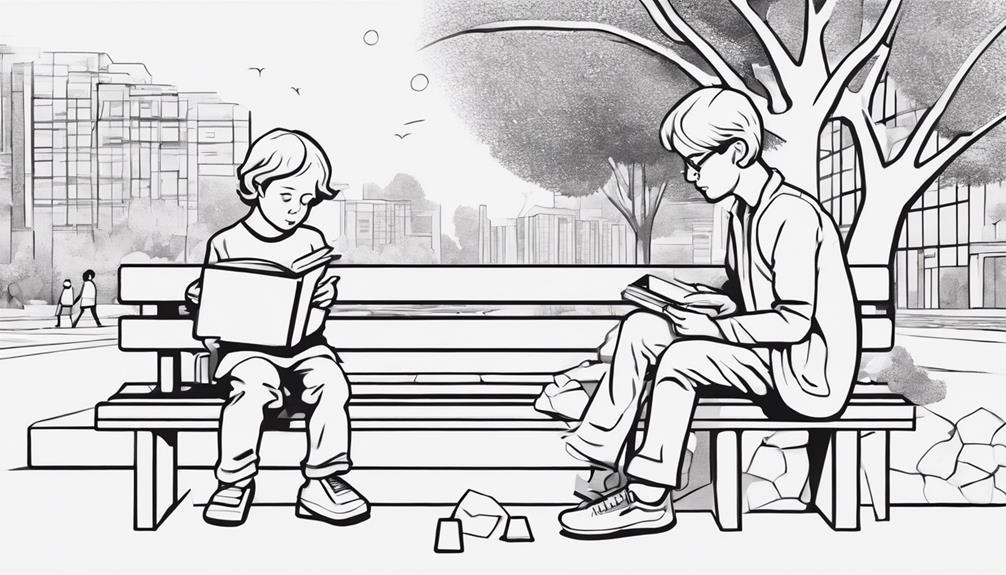
The impacts of experience and learning on thinking processes are profound, shaping individuals' cognitive frameworks and problem-solving approaches. Children absorb knowledge through hands-on exploration and play, fostering creativity and curiosity. In contrast, adults rely on cognitive strategies and linguistic tools acquired through formal education to analyze and interpret information systematically.
Effects of Upbringing
Children's upbringing plays a pivotal role in shaping their cognitive development and emotional well-being, with experiences and learning during early years significantly influencing their perspectives and behaviors throughout adulthood. The effects of upbringing are profound and can impact individuals in various ways:
- Diverse Environments: Children raised in diverse environments develop broader perspectives and adaptability to different situations.
- Trauma Impact: Adults who experienced trauma in childhood may have altered emotional responses and coping mechanisms.
- Positive Reinforcement: Positive reinforcement and consistent boundaries in upbringing can lead to better emotional regulation in both children and adults.
- Cultural Exposure: Exposure to various cultures and traditions during upbringing can shape individuals' beliefs and values significantly.
These factors highlight the importance of early experiences in shaping individuals' lifelong development.
Knowledge Acquisition Process
In the realm of cognitive development, the process of knowledge acquisition is intricately intertwined with individuals' experiences and learning mechanisms. Children primarily acquire knowledge through exploration, play, and sensory experiences, which are fundamental in their developmental stages. These direct interactions with the environment shape their understanding of the world. In contrast, adults rely on prior knowledge, cognitive strategies, and meta-cognition to acquire new information. Their learning process is characterized by drawing upon a wide range of learned information and analytical skills. The difference in knowledge acquisition between children and adults is influenced by their unique developmental stages, cognitive abilities, and exposure to diverse learning opportunities. Understanding these distinctions sheds light on the varying approaches to acquiring knowledge at different life stages.
Influence of Environment
Influences from the environment play a crucial role in shaping the cognitive processes of individuals at different stages of development.
- Children's thinking is heavily influenced by their immediate environment, including family, peers, and educational settings.
- Adults' thinking is shaped by a combination of past experiences, formal education, and ongoing learning opportunities.
- Children's cognitive development is greatly impacted by the quality and quantity of interactions and experiences they have in their environment.
- Adults' thinking is more likely to be influenced by a wider range of environmental factors, such as workplace dynamics, societal norms, and cultural influences.
Both children and adults can adapt and change their thinking based on new experiences and learning opportunities in their respective environments, thereby expanding their cognitive abilities and understanding of the world around them, including their visual field.
Social and Emotional Factors
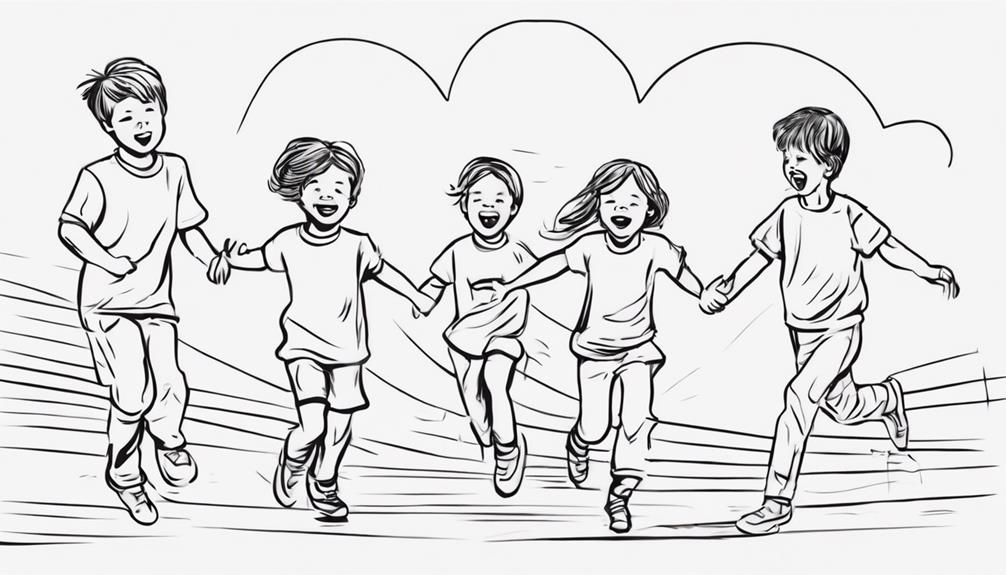
Social and emotional factors significantly shape the cognitive processes and decision-making strategies of individuals at different stages of development, as evidenced by a new study. Children tend to rely heavily on emotional cues and social interactions to make sense of the world around them, while adults often utilize cognitive reasoning and past experiences in their decision-making processes. Social influences, such as peer pressure and societal norms, play a crucial role in shaping children's emotional responses and behaviors, which can differ significantly from those of adults. Children's emotional development is intricately linked to their social interactions, including relationships with family, friends, and their school environment, impacting how they perceive and react to emotions compared to adults. Furthermore, adults typically exhibit more advanced emotional regulation skills and coping mechanisms, enabling them to manage and express their feelings in a more controlled manner than children who are still in the process of developing these skills. The social context in which emotions are expressed and understood varies between children and adults, influencing how they interpret and respond to social cues and emotional situations differently.
Cultural and Environmental Influences
Cultural and environmental factors profoundly shape the cognitive processes and decision-making strategies of individuals at different stages of development. These influences play a crucial role in molding the way children and adults think and perceive the world. Here are four key points to consider:
- Cultural Beliefs: Cultural beliefs and practices significantly impact the cognitive development of individuals. Children and adults are exposed to diverse cultural beliefs that shape their understanding of the world around them.
- Family Dynamics and Education Systems: Environmental factors like family dynamics and education systems greatly influence how children and adults develop their cognitive abilities. These factors provide the foundation for learning and decision-making strategies.
- Societal Norms: Societal norms play a vital role in shaping the thought processes of individuals. Children and adults internalize societal norms, which in turn affect their cognitive development and decision-making skills.
- Exposure to Diversity: Exposure to diverse cultures and experiences can lead to varied perspectives and thought processes in children and adults. This exposure broadens their cognitive horizons and enhances their decision-making capabilities.
Strategies for Effective Communication
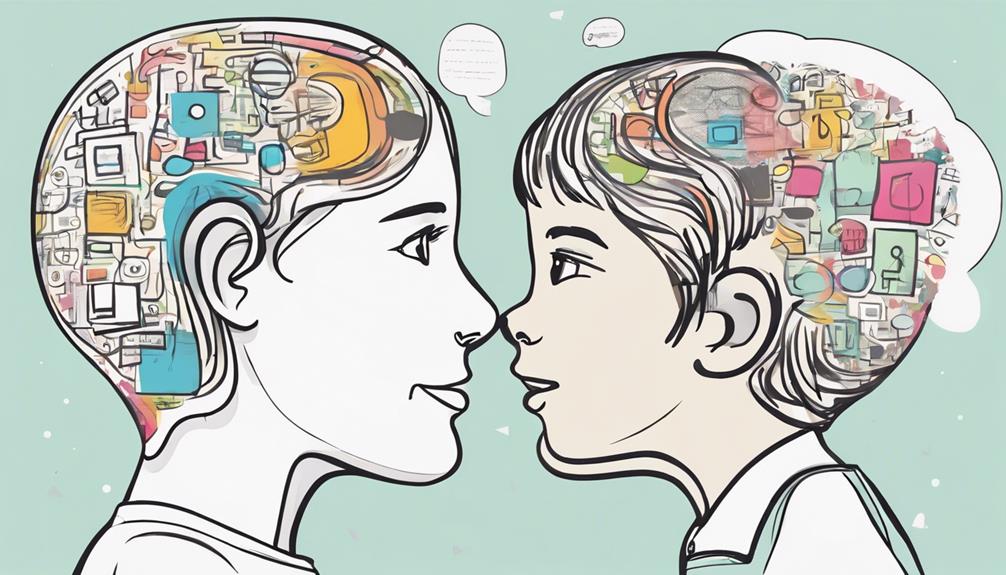
The development of effective communication strategies is paramount in navigating the interactions between children and adults, ensuring clarity and mutual understanding in their exchanges. For kids, using simple language, visual aids, and interactive activities can enhance engagement and comprehension. Visual aids such as pictures, diagrams, and gestures help children grasp concepts more easily. On the other hand, adults benefit from clear, concise language, active listening, and opportunities for feedback to improve communication. Non-verbal cues like body language and facial expressions are crucial in conveying messages for both kids and adults. Encouraging open dialogue, asking clarifying questions, and creating a safe space for expression can facilitate better communication between the two groups. Tailoring communication styles to align with the age, developmental stage, and individual needs of children and adults can lead to more effective and meaningful interactions. By incorporating these strategies, communication barriers between kids and adults can be minimized, fostering stronger and more harmonious relationships.
Frequently Asked Questions
What Is the Difference Between a Child and an Adult Mentally?
Developmental stages distinguish children from adults mentally. Children exhibit limited abstract thinking abilities, focusing on concrete experiences and immediate gratification. In contrast, adults possess more developed cognitive skills, engaging in problem-solving, critical thinking, and considering long-term consequences. Children rely on intuition and emotions, while adults use logic and reasoning. This progression in cognitive development underlies the mental disparities between children and adults.
What Is the Difference Between Childhood and Adulthood Do You Think?
Childhood is characterized by play, exploration, and learning through sensory experiences. In contrast, adulthood emphasizes work, critical thinking, and problem-solving using cognitive strategies and logical reasoning. Children have a higher tolerance for ambiguity, are more open to new experiences, and exhibit rapid learning and adaptation. Adults, on the other hand, seek stability, predictability, and demonstrate more developed cognitive abilities for complex reasoning and abstract thinking compared to children.
How Does a Child's Brain Differ From an Adults?
Brain development in children differs from adults in several key ways. Children exhibit higher neuroplasticity, allowing for faster learning and adaptation. Their prefrontal cortexes are still maturing, impacting decision-making. Synaptogenesis and pruning occur more frequently in children's brains. In contrast, adults possess fully developed prefrontal cortexes and increased connectivity between brain regions, enhancing problem-solving abilities. Understanding these distinctions sheds light on the cognitive disparities between children and adults.
How Is Adults Perspective Different From That of a Child?
Developmental stages play a crucial role in understanding the differences between adults' and children's perspectives. Adults, due to advanced cognitive development, integrate sensory inputs effectively for a unified perception. In contrast, children, whose brains are still developing, tend to keep sensory information separate until around age 12. This age-related difference in processing sensory information leads to distinct perspectives between adults and children, highlighting the importance of considering developmental stages in understanding cognitive disparities.
Conclusion
In conclusion, the disparity in cognitive processes between children and adults can be attributed to various factors such as cognitive development stages, neurological variances, and the impacts of experience and learning. Understanding these differences is imperative for educational strategies and further research into developmental disorders. By considering the unique perspectives of children and adults, we can enhance communication and promote effective learning outcomes. In essence, unraveling the complexities of cognitive development is paramount for advancing our understanding of the human mind.
